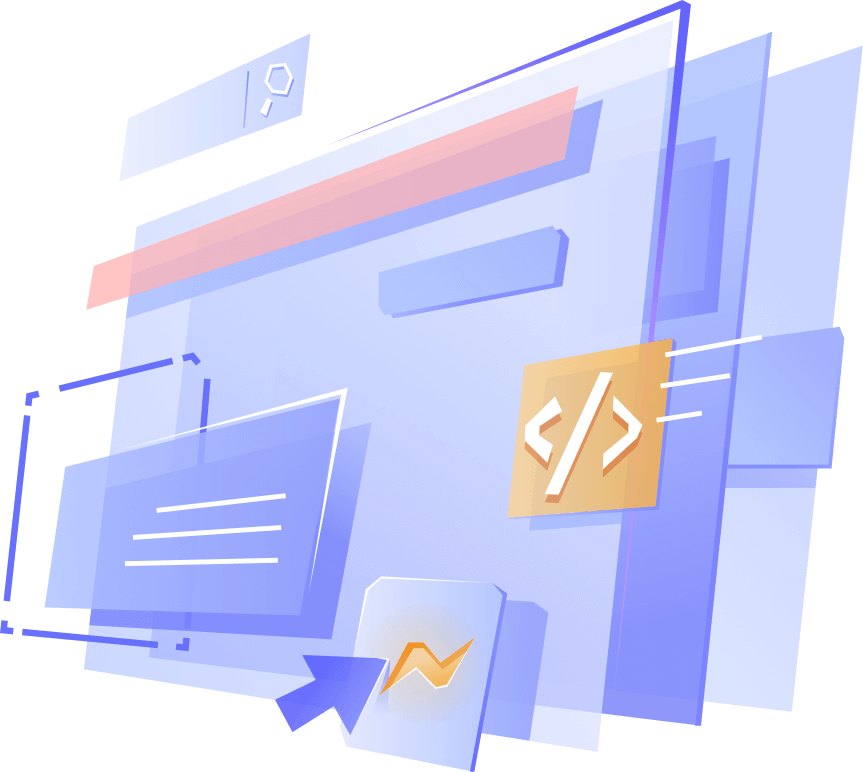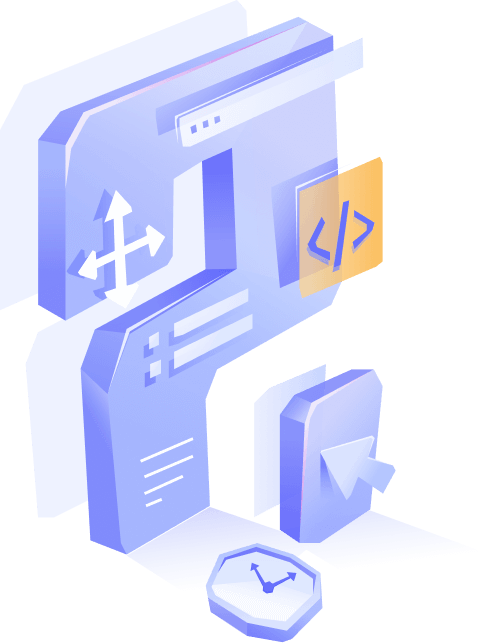Introduction to rapid application development

- What is rapid application development?
- Rapid application development methodology
- Phases of rapid application development
- Advantages of rapid application development methodology
- Disadvantages of rapid application development methodology
- Best practices for rapid application development
- Is rapid application development the same as agile?
- When should you use the rapid application development model for software development?
- Rapid application development tools
- How low-code enables rapid application development
- Rapid application development in summary
- FAQs on rapid application development

What is rapid application development?
Rapid application development (RAD) is a methodology focused on fast prototyping and iterative development of software applications. Unlike the traditional waterfall model that follows a linear approach to software engineering, user feedback and involvement throughout the development process ensure the final product meets the user's needs effectively.
By focusing on quick iterations and minimizing upfront planning, RAD aims to reduce development time and costs while maximizing flexibility and adaptability.
Rapid application development methodology
RAD methodology prioritizes a rapid application development cycle and iterative prototyping over strict planning and documentation. Here are the key features.
Prototyping
RAD begins with building a quick prototype of the application, allowing stakeholders to visualize the final working model early in the development process.
Iterative development
RAD involves multiple iterations where the application is refined based on continuous feedback from users and stakeholders.
Time-boxing
RAD projects are divided into short development cycles or "sprints," typically lasting a few weeks, to ensure quick delivery of working software.
Team collaboration
RAD promotes close cooperation between the development team, users, and other stakeholders throughout the development process.
Phases of rapid application development
Rapid application development involves iterative development cycles, where each cycle consists of several phases. The phases of RAD development can vary depending on the use of a specific methodology or framework, but here are the common phases.
Requirements planning stage
In this phase, the project scope is defined, and initial requirements are gathered from stakeholders. The focus is on identifying the essential features and functionalities of the application.
User design phase
During this phase, user interface (UI) design and prototyping take place. The emphasis is on creating mockups or prototypes of the system's UI to gather feedback from users and stakeholders early in the development process.
Construction and prototyping phase
The construction phase involves the actual development of the application using rapid prototyping techniques. Developers work closely with users and stakeholders to quickly build and refine the system's features.
Cutover phase
In this phase, the system is deployed and tested in a live production environment. Data migration, data conversion, user training, and other activities necessary for the transition to the new system may also occur during this phase.
Feedback and implementation phase
After deployment, feedback from users and stakeholders is collected to identify areas for improvement. This feedback is used to iterate on the application and make necessary adjustments in the final phase.
These phases are often repeated in multiple cycles with each iteration building upon the user feedback received from the previous cycle. This iterative nature allows for rapid development and continuous improvement of the application.
Advantages of rapid application development methodology
Here are some of the key benefits of rapid application development methodology.
Prototyping
The RAD process begins with building a quick prototype of the application, allowing stakeholders and business users to visualize the final working model early in the app development process.
Iterative development
RAD involves multiple prototype iterations where the application is refined based on consistent feedback from software users and stakeholders.
Time-boxing
RAD projects are divided into short development cycles or manageable tasks called "sprints," typically lasting a few weeks, to ensure quick delivery of working software.
Better collaboration
RAD focuses on close collaboration between IT teams, users, and other stakeholders throughout the software development cycle.
Disadvantages of rapid application development methodology
Here are some of the disadvantages of rapid application development.
Complexity management
In complex projects, managing the rapid pace of the development cycle and iteration can be challenging. Without proper oversight and control, the RAD process can quickly become chaotic, leading to confusion and potential quality issues.
Not suitable for all projects
RAD may not be suitable for projects with well-defined requirements or those requiring strict adherence to regulatory standards. Its focus on rapid prototyping and flexibility may not align with the needs of such projects.
Potential for scope creep
The flexibility of the RAD method can also increase the risk of scope creep. Without proper discipline and control, stakeholders may continuously introduce new requirements, leading to project delays, an increase in technical risk, and budget overruns.
Best practices for rapid application development
Some of the best practices to undertake when building applications are:
Define project requirements
Define clear goals and objectives for each iteration to keep the development focused and on track.Involve stakeholders early
Engage stakeholders and end-users from the beginning to gather feedback and ensure alignment.Use prototyping tools
Leverage prototyping tools and low-code platforms to quickly create and iterate on design concepts.Continuous testing and feedback
Conduct regular testing and gather feedback from users to identify and address issues early.Iterate and improve
Continuously iterate on software based on user feedback and evolving requirements to deliver value quickly and ensure client satisfaction.
Looking for an application development platform for your organization?
Sign up for freeIs rapid application development the same as agile?
While the RAD methodology shares similarities with agile project management, they are not identical. RAD focuses on prototyping and iteration, while agile encompasses a broader set of principles and practices, including iterative development, continuous integration, and self-organizing teams. However, both RAD and agile development models emphasize flexibility, collaboration, and responsiveness to change.
Aspect
RAD
Agile
Development approach
Emphasizes rapid prototyping and quick iterations.
Focuses on incremental development and continuous delivery.
Planning
Minimal upfront planning as requirements evolve through iterations.
Iterative planning with a focus on delivering value in short cycles.
Flexibility
Highly flexible and adaptable to changing requirements.
Flexible and responsive to changing customer needs.
User involvement
Users are actively involved throughout the development process.
User feedback is incorporated through regular iterations.
Time to market
Faster time to market due to rapid prototyping and iterative development.
Quick delivery of working software through incremental releases.
Suitability
Defined projects with clear requirements.
Evolving projects with changing needs.
When should you use the rapid application development model for software development?
The RAD approach is best suited for software development projects where there is a high need for speed, flexibility, and continuous feedback. Here are some situations where rapid application development is commonly used.
Projects with tight deadlines
When there's a pressing need to deliver a product within a short timeframe, RAD can expedite the development process through its iterative and incremental approach, enabling quicker releases and faster time to market.
Projects with evolving requirements
The RAD model is well-suited for situations where requirements are expected to evolve or are not fully defined upfront. It allows for flexibility in accommodating changes as the project progresses, ensuring the final product meets stakeholders' approval.
Client-centric projects
Projects that require extensive client involvement and constant feedback benefit from RAD. By involving clients early in the ongoing development process and delivering incremental releases, RAD ensures the final product aligns closely with client expectations and requirements.
Prototype development
The RAD approach is ideal for proof-of-concept projects where the primary goal is to demonstrate core functions or model completion to validate ideas quickly.
Looking for an application development platform for your organization?
Sign up for freeRapid application development tools
Rapid application development offers a pragmatic approach to software development, emphasizing speed, flexibility, and collaboration. By embracing iterative development, user feedback, and low-code tools, RAD teams can accelerate development to deliver high-quality software solutions quickly and adapt to changing business needs effectively. With the emergence of low-code platforms, RAD has become even more accessible, empowering organizations to accelerate development efforts and drive innovation.
Visual development
Drag-and-drop interfaces and visual editors allow developers to design user interfaces and workflows graphically without writing code manually.
Reusable components
Libraries of prebuilt components or templates that developers can leverage help accelerate development and reduce the need for custom coding.
Rapid prototyping
These emphasize the creation of prototypes and mockups early in the development process, allowing stakeholders to provide feedback and iterate quickly before committing to full-scale development.
Automated code generation
Generate code based on visual designs or use code templates to automate standard functionality.
Iterative development
Frequent iterations and feedback loops allow developers to refine and improve the application over time incrementally.
Collaboration support
This facilitates collaboration among team members, such as version control, real-time editing, and communication tools.
Here are some of the popular RAD tools available on the market:
Low-code platforms
OutSystems, Mendix, Zoho Creator, Microsoft Power Apps, Appian, Salesforce Lightning Platform
No-code platforms
Bubble, Glide, Adalo, Webflow
Visual development tools
Microsoft Visual Studio, Delphi (Embarcadero RAD Studio), Xcode (with Interface Builder), Qt Creator
Model-driven development (MDD) tools
IBM Rational Rose, Sparx Systems Enterprise Architect, Pega Platform
Component-based development tools
Apache Wicket, Spring Roo, Sencha Ext JS
Prototyping tools
Axure RP, Balsamiq, Sketch, Adobe XD
Agile development tools
JIRA, Trello, Rally Software
Web development frameworks
Ruby on Rails, Laravel, Django, ASP.NET Core
How low-code enables rapid application development
Low-code app development platforms, like Zoho Creator, are considered RAD tools because they help development teams expedite the process of building applications compared to traditional methods.
Visual development
Low-code platforms offer visual development interfaces, allowing users to create applications through drag-and-drop components, forms, and workflows. This visual approach eliminates the need for manual coding, speeding up development.
Abstracted complexity
Low-code abstracts away much of the underlying complexity of software development. They provide prebuilt templates, reusable components, and predefined functions that enable developers to quickly assemble applications without having to write code from scratch.
Process automation
Low-code platforms help automate common tasks such as data integration, validation, and deployment. These built-in automation capabilities streamline the project lifecycle and reduce time-consuming manual effort, leading to faster application delivery. Read more
Collaboration
Low-code platforms support collaboration features that enable teams to work together more efficiently. Software developers, designers, and business stakeholders can collaborate in real time, providing feedback and making iterative changes quickly, which accelerates the entire project cycle.
By simplifying the software development cycle, automating repetitive tasks, and fostering collaboration, low-code platforms empower organizations to develop applications rapidly and respond swiftly to changing business needs. This makes them a powerful tool for the rapid application development approach.
Rapid application development in summary
Rapid application development offers a pragmatic approach to software development, emphasizing speed, flexibility, and collaboration. By embracing low-code tools, RAD teams can accelerate the development process to deliver high-quality software solutions quickly and adapt to changing business needs effectively. With the emergence of low-code platforms, RAD has become even more accessible, empowering organizations to accelerate development efforts and drive innovation.
Looking for a low-code solution for your organization?
Sign up for freeFrequently asked questions
Is rapid application development suitable for all types of projects?
RAD methodology is best suited for projects with well-understood or rapidly evolving requirements, where quick prototyping and feedback are essential.
How does rapid application development differ from traditional waterfall development?
RAD emphasizes iterative development whereas traditional waterfall development follows a sequential approach with distinct phases.
What role do end-users play in rapid application development?
End-users are actively involved throughout the development cycle, providing feedback on prototypes and helping refine requirements.
Can rapid application development be combined with other methodologies?
Yes, the RAD model can be combined with other methodologies such as agile to suit the specific needs of the project.
What are some popular rapid application development tools?
Popular tools include Zoho Creator, OutSystems, and Microsoft PowerApps, among others. These tools facilitate rapid development of custom applications with minimal coding.